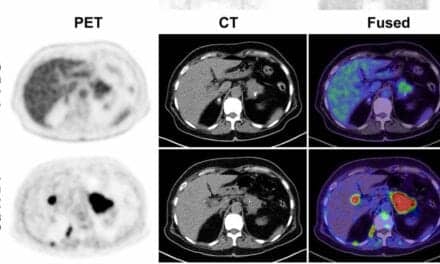In a new study published in the Korean Journal of Radiology, researchers compared the utility and diagnostic performance of automated breast ultrasound system (ABUS) with that of hand-held ultrasound (HHUS) in evaluating breast cancer patients’ pure non-mass enhancement (NME) lesions.
Objective: To compare the utility and diagnostic performance of automated breast ultrasound system (ABUS) with that of hand-held ultrasound (HHUS) in evaluating pure non-mass enhancement (NME) lesions on breast magnetic resonance imaging (MRI).
Materials and methods: One hundred twenty-six consecutive MRI-visible pure NME lesions of 122 patients with breast cancer were assessed from April 2016 to March 2017. Two radiologists reviewed the preoperative breast MRI, ABUS, and HHUS images along with mammography (MG) findings. The NME correlation rate and diagnostic performance of ABUS were compared with that of HHUS, and the imaging features associated with ABUS visibility were analyzed.
Results: Among 126 pure NME lesions, 100 (79.4%) were malignant and 26 (20.6%) were benign. The overall correlation rate was 87.3% (110/126) in ABUS and 92.9% (117/126) in HHUS. The sensitivity and specificity were 87% and 50% for ABUS and 92% and 42.3% for HHUS, respectively, with no significant differences (p = 0.180 and 0.727, respectively). Malignant NME was more frequently visualized than benign NME lesions on ABUS (93% vs. 65.4%, p = 0.001). Significant factors associated with the visibility of ABUS were the size of NME lesions on MRI (p < 0.001), their distribution pattern (p < 0.001), and microcalcifications on MG (p = 0.027).
Conclusion: ABUS evaluation of pure NME lesions on MRI in patients with breast cancer is a useful technique with high visibility, especially in malignant lesions. The diagnostic performance of ABUS was comparable with that of conventional HHUS in evaluating NME lesions.
Reference
Kwon BR, Chang JM, Kim SY, et al. Utility and Diagnostic Performance of Automated Breast Ultrasound System in Evaluating Pure Non-Mass Enhancement on Breast Magnetic Resonance Imaging [published online ahead of print, 2020 Jul 22]. Korean J Radiol. 2020;10.3348/kjr.2019.0881. doi:10.3348/kjr.2019.0881
Read the full study.






